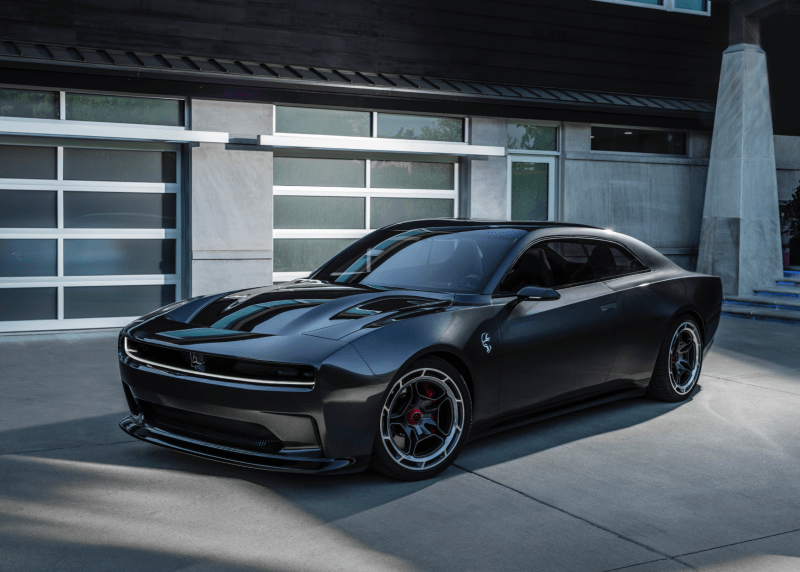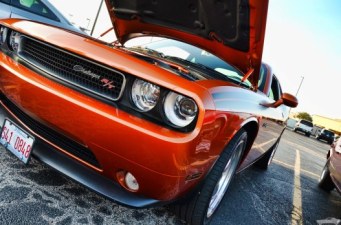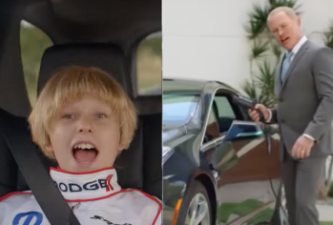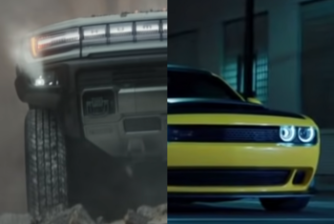OPINION: To Defeat the New Electric Dodge Muscle Cars, Amp Up Sound Cameras
A toxic muscle-car maker finds new ways to appeal to the caveman instinct.

Meet the new electric Dodge; same as the old gasoline-powered Dodge?
Like all automobile manufacturers, Dodge — maker of “muscle” cars including the Charger, Challenger and Durango — has had to adapt to the new reality of an American market that is shifting from noisy, emission-belching, gasoline-powered vehicles to quieter, less-polluting electric ones.

The company, which markets its muscle cars as vehicles for speeding, drag racing, and mayhem — in effect, as killing machines, which they have become on the streets of New York and other cities — recently announced that it is retiring its gas-guzzling brood and reintroducing the models as EVs. Even so, it has found a way to defeat the milquetoast image associated with electric vehicles.
Enter the 2024 Dodge Charger Daytona SRT Banshee (still a concept vehicle), which the company has been showcasing at auto shows with its usual pitch: a big, fat thumb in the eye of “authority.”
For Dodge, selling anti-establishment rebellion as a way to reach deep into America’s wallets is a cinch.
“We didn’t ask for the rules to change. We didn’t want them to change, but they did,” growled Dodge’s CEO Tim Kuniskis, introducing the Banshee at a drag-racing event in Detroit this summer. “And we can try to outrun them, but that would be a nine second pass straight into extinction. Or we can do what we did: read their rules. Study their rules. Find their gray areas, then ‘unleash the Banshee.’ Trust me, this is not the EV they want you to have. This is the way Dodge does EVs.”
As an adman who has worked on automotive accounts, I have called for the regulation of the toxic ads that carmakers use to sell their products, which are just as noxious as cigarette advertising. But, given Dodge’s new strategy, it’s time for Americans to adopt another measure to curtail monstrous muscle cars like the Charger: sound cameras — traffic cameras with mics, which record decibel levels and ticket noisy vehicles. New York City already has some of the devices, which likely will spread around the country.
See, even though EVs are a smooth and quiet experience, Dodge has an ingenious work-around to get the vintage muscle-car sound that satisfies its caveman customer base. According to its promotional material, “This is the EV you didn’t see coming but you’ll hear coming,” thanks to Dodge’s patented “Fratzonic Chambered Exhaust,” which outputs sound up to 126 decibels, right at the cusp of the human pain threshold! The company aims to make our streets a non-stop auto karaoke party that Americans can’t escape — simulating aggressive sound in a desperate attempt to retrofit archaic and unnecessary toxic attributes for their core market.
Meanwhile, Dodge’s new multi-speed transmission system, eRUPT, simulates the thrill of the muscle car’s traditional rough ride, “throw[ing] your shoulders back into the seat at shift points.” This power-affirming physical motion, which buyers crave in order to validate their dominance on our streets, goes nicely with some other new “features” users can unlock, such as Slam Mode, Drift Mode, Drag Mode and, of course, the driving staple, Donut Mode (which, as the names suggest, give the car more power and make it like a race car).
So what, you say? Dodge has trafficked in automotive violence and toxic masculinity for more than five decades; the Charger, in particular, gain fame through racist, violent TV shows and movies like “Dukes of Hazzard” and “The Fast and the Furious,” and has figured in deadly crashes, such as the Charlottesville vehicle-ramming attack that killed justice activist Heather Heyer.
You might argue that you can’t fault a company for knowing its brand and customers. Well, as Streetsblog recently reported, EVs are heavier, with faster acceleration, and cause more damage in collisions. So, this real-world danger, mixed with Dodge’s notorious positioning of violent driving, catapults this retro-obsessed vehicle forward into a new electrified world of road violence — or, as Dodge puts it, “an assault and battery on convention.”
In this ever-changing landscape, a company that profits from a toxic heritage is now taking the worst from its past and present and “slamming” it into its and, unfortunately, our future. Let’s enact thoughtful measures that run these monstrous muscle cars off the road.
Tom Flood (@tomflood1) develops strategy, creative content and gives lectures/workshops through his agency, Rovelo Creative, creativebyrovelo.com. His judgements featured in StreetsblogUSA’s series on America’s Most Toxic Car Ads.





